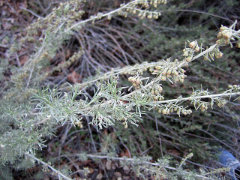 |
|
Bri Weldon Creative Commons Attribution 2.0 |
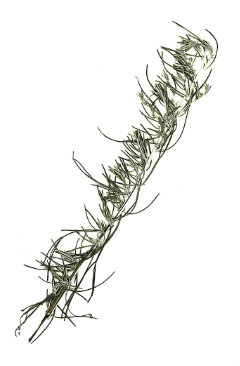 |
| John Rusk CC-BY-NC-SA from Berkeley, CA |
Translate this page:
Summary
California Sagebrush was traditionally an essential medicinal herb for the native North Americans, who used it for various purposes, particularly as an emmenagogue and birthing aid. It was used to induce menstruation, provide a comfortable childbirth experience, and promote rapid postnatal recovery. The essential oil from this plant contains five toxic terpenes. It has been suggested that releasing terpenes by California sagebrush contributes to the relative lack of vegetation under and adjacent to the shrub. Due to their pest-repellent properties, Artemisia species are often used for soil improvement, as ground cover, and in companion planting. Some species are also used for erosion control.
Physical Characteristics

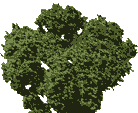 Artemisia californica is a deciduous Shrub growing to 2 m (6ft) by 2 m (6ft) at a fast rate.
Artemisia californica is a deciduous Shrub growing to 2 m (6ft) by 2 m (6ft) at a fast rate.
See above for USDA hardiness. It is hardy to UK zone 8 and is not frost tender. The flowers are pollinated by Wind. The plant is self-fertile.
It is noted for attracting wildlife.
Suitable for: light (sandy) and medium (loamy) soils, prefers well-drained soil and can grow in nutritionally poor soil. Suitable pH: mildly acid, neutral and basic (mildly alkaline) soils and can grow in saline soils.
It cannot grow in the shade. It prefers dry or moist soil and can tolerate drought. The plant can tolerate maritime exposure.
UK Hardiness Map
US Hardiness Map
Synonyms
Crossostephium californicum (Less.) Rydb. A. abrotanoides Nutt. A. fischeriana Besser. A. fischeriana var. vegetior Besser. A. foliosa Nutt. Crossostephium foliosum Rydb.
Plant Habitats
Edible Uses
References More on Edible Uses
Medicinal Uses
Plants For A Future can not take any responsibility for any adverse effects from the use of plants. Always seek advice from a professional before using a plant medicinally.
The pollen is extracted and used as a desensitizing agent to relieve hay fever[1050 ]. The plant was an important medicinal herb for the native North Americans, who used it for various purposes, particularly as an emmenagogue and birthing aid. It was used to induce menstruation, provide a comfortable childbirth experience, and promote rapid postnatal recovery. Beginning with menstruation, young girls were given tea from boiled California sagebrush. From this point forward, California sagebrush tea was drunk just before each menstrual period for their reproductive life. The drink was also given to newborn babies one day after birth to clean out their system. The leaves were also used to relieve colds, chewed fresh or dried, and were smoked after mixing with tobacco and other leaves. They were also used in sweathouses for various cures[1050 ]. The leaves can be processed externally into a poultice and applied directly to the forehead to relieve headaches[1050 ].
References More on Medicinal Uses
The Bookshop: Edible Plant Books
Our Latest books on Perennial Plants For Food Forests and Permaculture Gardens in paperback or digital formats.
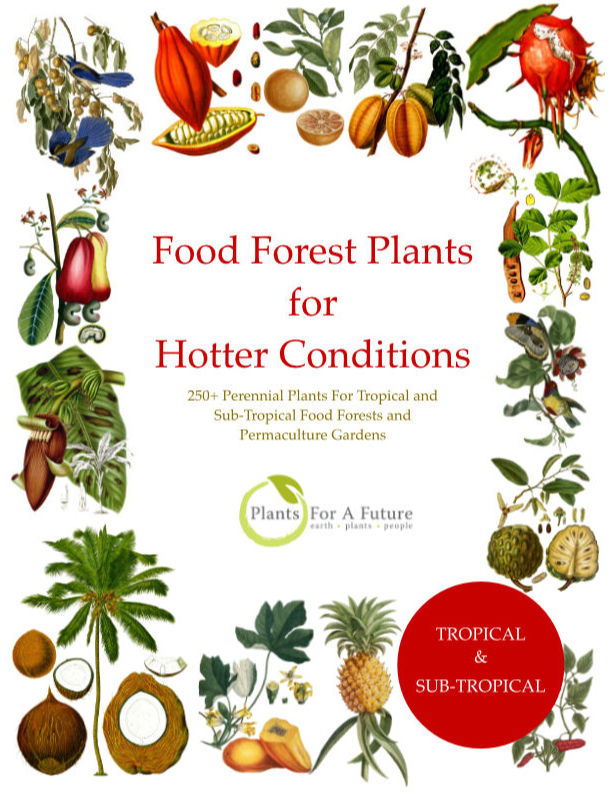
Edible Tropical Plants
Food Forest Plants for Hotter Conditions: 250+ Plants For Tropical Food Forests & Permaculture Gardens.
More
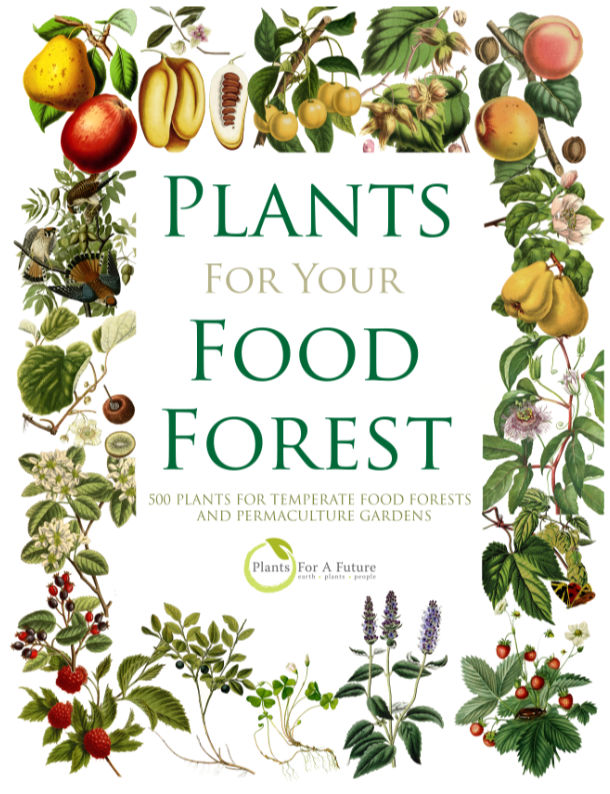
Edible Temperate Plants
Plants for Your Food Forest: 500 Plants for Temperate Food Forests & Permaculture Gardens.
More
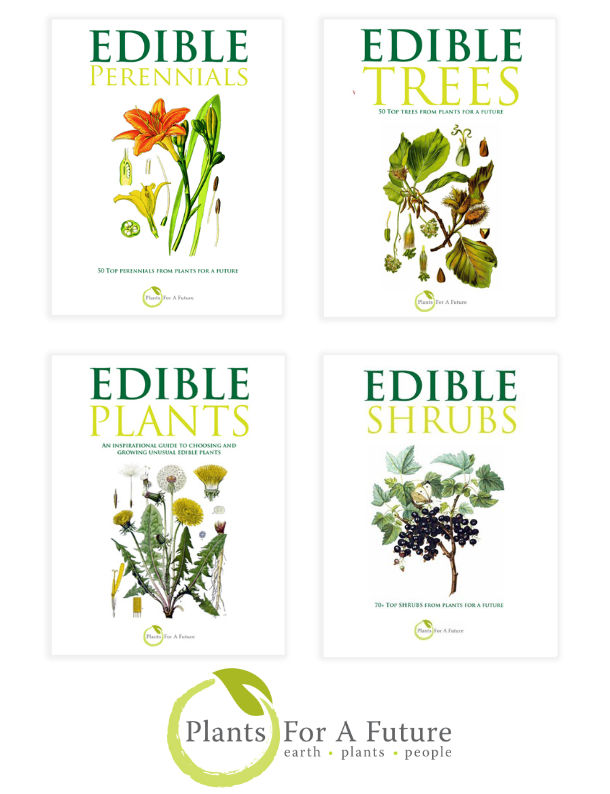
More Books
PFAF have eight books available in paperback and digital formats. Browse the shop for more information.
Shop Now
Other Uses
Agroforestry Uses: artemisia species are often used for soil improvement, as ground cover, and in companion planting due to their pest-repellent properties. Some species are also used for erosion control. The essential oil from this plant contains five toxic terpenes. It has been suggested that releasing terpenes by California sagebrush contributes to the relative lack of vegetation under and adjacent to the shrub. During the first rains of December, the leaf drip from California sagebrush is toxic. The rain leaches toxins from the leaves and litter absorbed by the soil, adding to toxins previously deposited by volatilisation during the dry season[1050 ]. California sagebrush seeds and transplants have successfully rehabilitated disturbed sites[1050 ]. The plant is said to have potential for use in erosion control[1050 ]. Other Uses: The branches have been used as firesticks[1050 ]. Due to their pest-repellent properties, Artemisia species are often used for soil improvement, as ground cover, and in companion planting. Some species are also used for erosion control. Nectary - Flowers rich in nectar and pollen: Artemisia species produce flowers that can provide nectar and pollen, attracting various pollinators, including bees. Wildlife - Food (Fruit, Seeds, Leaf litter, Shelter, Nesting, Roosting): The leaves of some Artemisia species are consumed by various insects and herbivores. It is an essential source of food for local wildlife because Artemisia californica flowers late in the season. Additionally the plant can provide cover for small wildlife. Invertebrate Shelter (Overwintering sites, Leaf litter, Groundcover): The dense foliage can offer shelter and overwintering sites for beneficial insects, and the leaf litter can provide habitat for various invertebrates. Pest Confuser (Smell): Many Artemisia species are aromatic and can confuse or repel pests due to their strong scent, which may deter some insects.
Special Uses
References More on Other Uses
Cultivation details
Semi-deciduous Shrub. Artemisia californica is a plant of Mediterranean climates, characterised by hot, dry summers and mild, moist winters. It grows in areas where the mean annual precipitation is 250 - 450mm, with 90% of that falling in the cooler half of the year[1050 ]. The plant grows best where winter temperatures average 9 - 12°c and summer temperatures do not exceed 24 - 27°c, though the plant does experience both lower and higher temperatures[1050 ]. Species in this genus are generally easily grown, succeeding in a well-drained circumneutral or slightly alkaline loamy soil, preferring a sunny position[1, 200 ]. They tend to live longer, more hardy and more aromatic when grown in poor, dry soil[245 ]. Established plants are drought tolerant[692, 1050 ]. The plant responds well to regular pruning to keep it compact[692 ]. Several low-growing cultivars have been developed for ornamental use[692 ]. The leaves are highly aromatic due to terpenes[1050 ]. The aroma is like the culinary mints known as common sage (Salvia species)[270 ]. The smaller leaves remain wilted for long periods when the plant is under water stress and rehydrate within hours of rainfall[1050 ]; plants can resprout from the root crown after a fire[1050 ]. The plants are sensitive to atmospheric pollution[1050]. The native range of this species is from California to Mexico (Baja California). It grows primarily in the desert or dry shrubland biome [2-5]. Soil Texture: Thrives in light (sandy) or medium soils. It is highly adaptable to rocky and nutrient-poor soils. Soil Moisture: Prefers dry to moderately moist conditions. It is highly drought-tolerant once established and does not tolerate wet or waterlogged soils. Drainage: Requires well-drained soil. Poor drainage can lead to root rot. Soil pH: Tolerates a wide range of soil pH levels, from acidic to alkaline. Saline Tolerance: Can tolerate mild saline conditions, making it suitable for coastal gardens. Tolerance of Poor Soil: It is well-adapted to poor, rocky, or sandy soils and thrives in nutrient-deficient areas. Light Requirements: Requires full sun for optimal growth and development. It may tolerate very light shade but thrives best in open, sunny areas. Height: Typically grows to about 1–2 meters (3–6 feet) tall, with a spread of 2–3 meters (6–10 feet). Pollination: Pollinated primarily by wind, though it may attract some small insects to its inconspicuous flowers. Temperature: Native to California and hardy in USDA zones 7–10. It thrives in coastal sage scrub habitats and Mediterranean climates. Drought Tolerance: Extremely drought-tolerant and ideal for xeriscaping. Flowering: Produces small, pale yellow flowers in late summer to fall, though its aromatic, finely divided grey-green foliage is its main ornamental feature. Pests and Diseases: Generally pest-free and resistant to most diseases, though it may develop root rot in poorly drained or overly wet soils. The aerial parts can be harvested in summer when they are in full bloom, while roots can be harvested in autumn.
Artemisia typically flowers in summer.
Artemisia species can vary in growth rate, but many are moderately fast-growing, reaching maturity within 1-2 years under optimal conditions.
References Carbon Farming Information and Carbon Sequestration Information
Temperature Converter
Type a value in the Celsius field to convert the value to Fahrenheit:
Fahrenheit:
The PFAF Bookshop
Plants For A Future have a number of books available in paperback and digital form. Book titles include Edible Plants, Edible Perennials, Edible Trees,Edible Shrubs, Woodland Gardening, and Temperate Food Forest Plants. Our new book is Food Forest Plants For Hotter Conditions (Tropical and Sub-Tropical).
Shop Now
Plant Propagation
Seed - surface sow ensuring the compost does not dry out[200 ]. When large enough to handle, prick the seedlings into individual pots. Plant out in late spring or early summer. Division in spring or autumn[200 ]. Basal cuttings in late spring. Harvest the young shoots about 10 - 15cm long, pot them up in a lightly shaded position, and plant them out when well rooted. It's very easy.
Other Names
If available other names are mentioned here
California sage brush
Native Range
Native to: California, Mexico Northwest [2-5].
Weed Potential
Right plant wrong place. We are currently updating this section.
Please note that a plant may be invasive in one area but may not in your area so it's worth checking.
None Known
Conservation Status
IUCN Red List of Threatened Plants Status : Not Available

| Related Plants
|
| Latin Name | Common Name | Habit | Height | Hardiness | Growth | Soil | Shade | Moisture | Edible | Medicinal | Other |
| Artemisia abrotanum | Southernwood | Shrub | 1.2 |
4-8
| | LMH | SN | DM | 1 | 3 | 3 |
| Artemisia absinthium | Wormwood, Absinthium. | Perennial | 1.0 |
4-9
| M | LM | SN | DM | 1 | 3 | 3 |
| Artemisia annua | Qing Hao, Sweet sagewort | Annual | 3.0 |
6-9
| F | LM | SN | DM | 1 | 4 | 2 |
| Artemisia anomala | | Perennial | 1.0 |
-
| | LMH | SN | M | 0 | 2 | |
| Artemisia arborescens | Tree Wormwood | Shrub | 1.0 |
8-10
| F | LM | N | DM | 0 | 2 | 3 |
| Artemisia argyi | | Perennial | 1.5 |
-
| | LM | SN | DM | 0 | 2 | |
| Artemisia biennis | Biennial Wormwood | Annual/Biennial | 1.0 |
3-8
| | LM | SN | DM | 1 | 1 | 1 |
| Artemisia campestris | Field Southernwood | Perennial | 1.5 |
3-8
| | LM | SN | DM | 1 | 2 | 1 |
| Artemisia campestris glutinosa | | Perennial | 1.5 |
-
| | LM | SN | DM | 0 | 0 | 1 |
| Artemisia capillaris | Yin Chen Hao | Shrub | 0.5 |
6-9
| | LM | SN | DM | 1 | 3 | |
| Artemisia carruthii | Carruth Wormwood | Perennial | 0.4 |
4-9
| M | LM | N | DM | 1 | 0 | 0 |
| Artemisia caruifolia | | Annual | 1.0 |
-
| | LM | SN | DM | 1 | 3 | 1 |
| Artemisia cina | Cina, Santonica | Shrub | 1.0 |
0-0
| | LM | S | DM | 0 | 3 | |
| Artemisia dracunculoides | Russian Tarragon, Tarragon, French Tarragon | Perennial | 1.0 |
5-8
| M | LM | SN | DM | 2 | 1 | 3 |
| Artemisia dracunculus | Tarragon, French Tarragon | Perennial | 0.6 |
5-9
| M | LM | SN | DM | 4 | 2 | 3 |
| Artemisia filifolia | Sand Sage, Sand sagebrush | Shrub | 1.2 |
3-7
| | LM | SN | DM | 0 | 2 | 1 |
| Artemisia frigida | Fringed Wormwood, Prairie sagewort | Perennial | 0.3 |
3-8
| | LM | N | DM | 2 | 2 | 3 |
| Artemisia glacialis | Glacier Wormwood | Perennial | 0.2 |
4-8
| | LMH | N | DM | 1 | 2 | |
| Artemisia gmelinii | Russian Wormwood, Gmelin's wormwood | Perennial | 1.5 |
3-7
| | LMH | N | DM | 1 | 1 | 2 |
| Artemisia herba-alba | White Wormwood | Shrub | 0.3 |
7-10
| F | LM | N | DM | 0 | 3 | 3 |
| Artemisia indica | | Annual/Perennial | 1.2 |
6-9
| | LM | SN | DM | 1 | 3 | 2 |
| Artemisia japonica | | Perennial | 1.0 |
7-10
| | LMH | SN | DM | 1 | 2 | 1 |
| Artemisia keiskeana | | Perennial | 0.6 |
-
| | LMH | SN | DM | 2 | 1 | 2 |
| Artemisia laciniata | Siberian wormwood | Perennial | 0.0 |
0-0
| | LMH | SN | DM | 1 | 0 | |
| Artemisia lactiflora | White Mugwort | Perennial | 1.5 |
4-8
| S | LMH | SN | M | 0 | 2 | |
| Artemisia lancea | | Perennial | 1.2 |
-
| | LMH | SN | DM | 1 | 1 | |
| Artemisia ludoviciana | White Sage, Louisiana Sage, Prairie Sage, Western Mugwort | Perennial | 1.0 |
3-9
| M | LM | SN | DM | 2 | 2 | 2 |
| Artemisia ludoviciana gnaphalodes | White Sage | Perennial | 1.0 |
4-8
| | LM | SN | DM | 0 | 2 | 1 |
| Artemisia maritima | Sea Wormwood | Shrub | 0.6 |
6-9
| | LM | N | DM | 1 | 2 | 1 |
|
|
Growth: S = slow M = medium F = fast. Soil: L = light (sandy) M = medium H = heavy (clay). pH: A = acid N = neutral B = basic (alkaline). Shade: F = full shade S = semi-shade N = no shade. Moisture: D = dry M = Moist We = wet Wa = water.
Now available:
Food Forest Plants for Mediterranean Conditions
350+ Perennial Plants For Mediterranean and Drier Food Forests and Permaculture Gardens.
[Paperback and eBook]
This is the third in Plants For A Future's series of plant guides for food forests tailored to
specific climate zones. Following volumes on temperate and tropical ecosystems, this book focuses
on species suited to Mediterranean conditions—regions with hot, dry summers and cool, wet winters,
often facing the added challenge of climate change.
Read More
Expert comment
Author
Less.
Botanical References
Links / References
For a list of references used on this page please go here
A special thanks to Ken Fern for some of the information used on this page.
Readers comment
| Add a comment |
|
If you have important information about this plant that may help other users please add a comment or link below. Only comments or links that are felt to be directly relevant to a plant will be included. If you think a comment/link or information contained on this page is inaccurate or misleading we would welcome your feedback at [email protected]. If you have questions about a plant please use the Forum on this website as we do not have the resources to answer questions ourselves.
* Please note: the comments by website users are not necessarily those held by PFAF and may give misleading or inaccurate information.
To leave a comment please Register or login here All comments need to be approved so will not appear immediately.
|
Subject : Artemisia californica
|
|
|
|